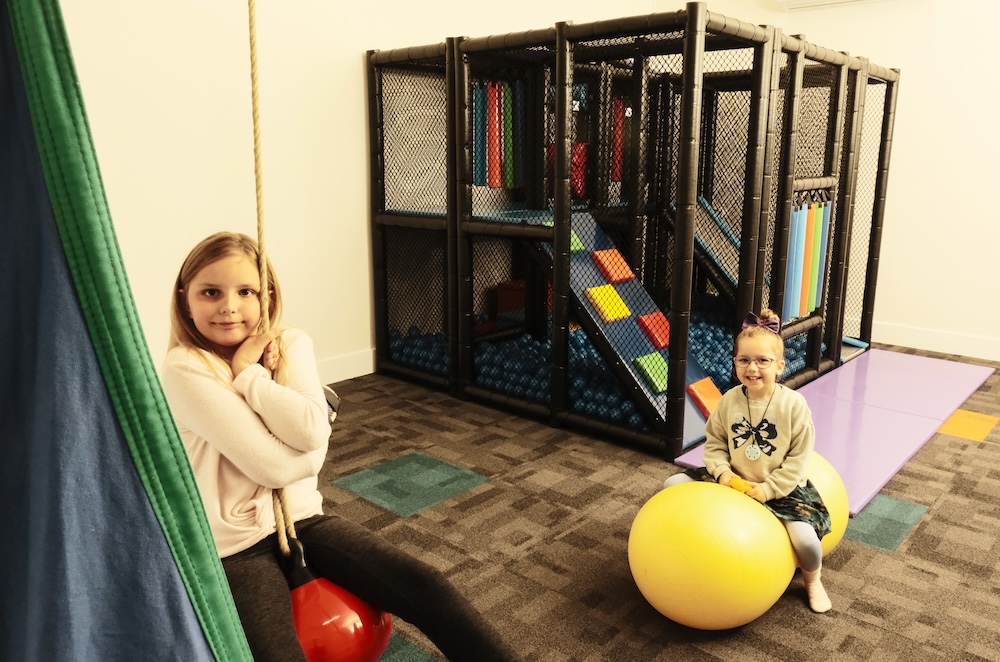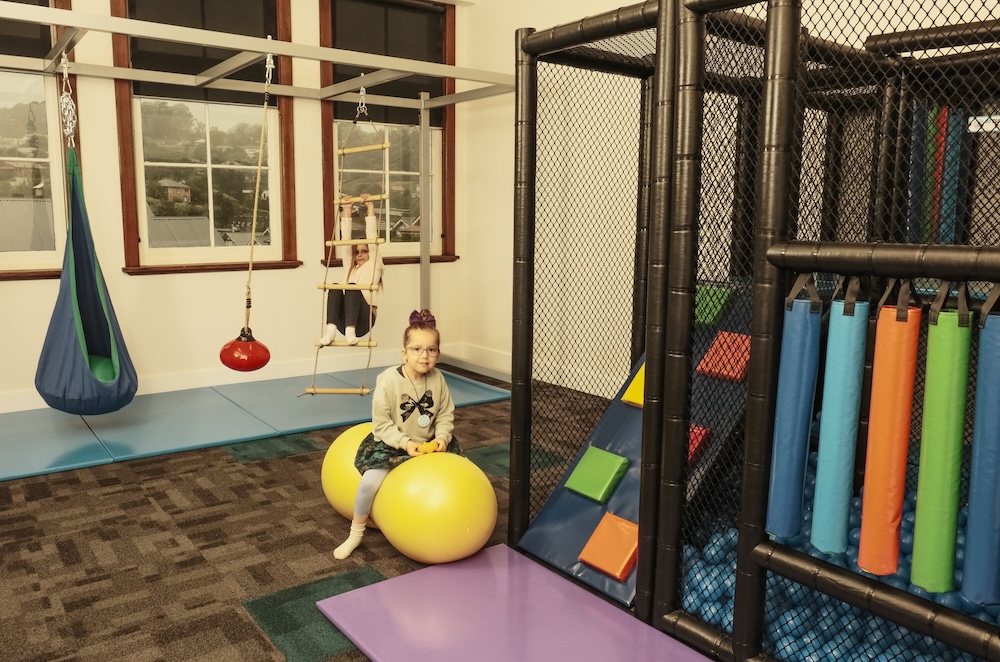Play Pod
Interactive Floor and Wall Projectors
Bubble Tube
Swing Pod
Climbing Cube
Early Intervention Activities
Play Pod
Play Pods offer a refreshing solution to address the challenges children face
in a world increasingly dominated by screens and structured activities.
Our Play Pods provide a much-needed space for unstructured play.
Unstructured play is essential for fostering creativity, imagination, and
problem-solving skills. Play Pods are designed to be engaging and
immersive environments that stimulate children’s curiosity and
imagination.
These modular playsets create a space where children can explore, invent,
and learn through play. Play Pods offer a blank canvas for children to
express their creativity. They can use these spaces to build forts, put on
impromptu puppet shows, and engage in other imaginative activities that
allow them to explore their creativity freely.
Unstructured playtime is crucial for a child’s cognitive, social, and
emotional development. Play Pods provide a balance between screen time
and hands-on exploration, helping children develop important life skills in
addition to being tech-savvy. Play Pods are versatile and can be customized
to fit different age groups and themes.
Play Pods promote physical exercise by encouraging children to move and
explore. They also foster social interactions as children collaborate and play
together within these environments. By providing a space for unstructured
play, Play Pods help children reclaim the wonder of childhood playtime.
This is where knowledge, hilarity, and boundless creativity come together.
Interactive Floor and Wall Projectors
At IGH, we use state-of-the-art technologies for intervention, namely Interactive projectors that can be particularly beneficial for individuals with disabilities, autism, and dementia. These
technologies offer a range of features and applications that can enhance the quality of life and provide therapeutic benefits for individuals with diverse needs.
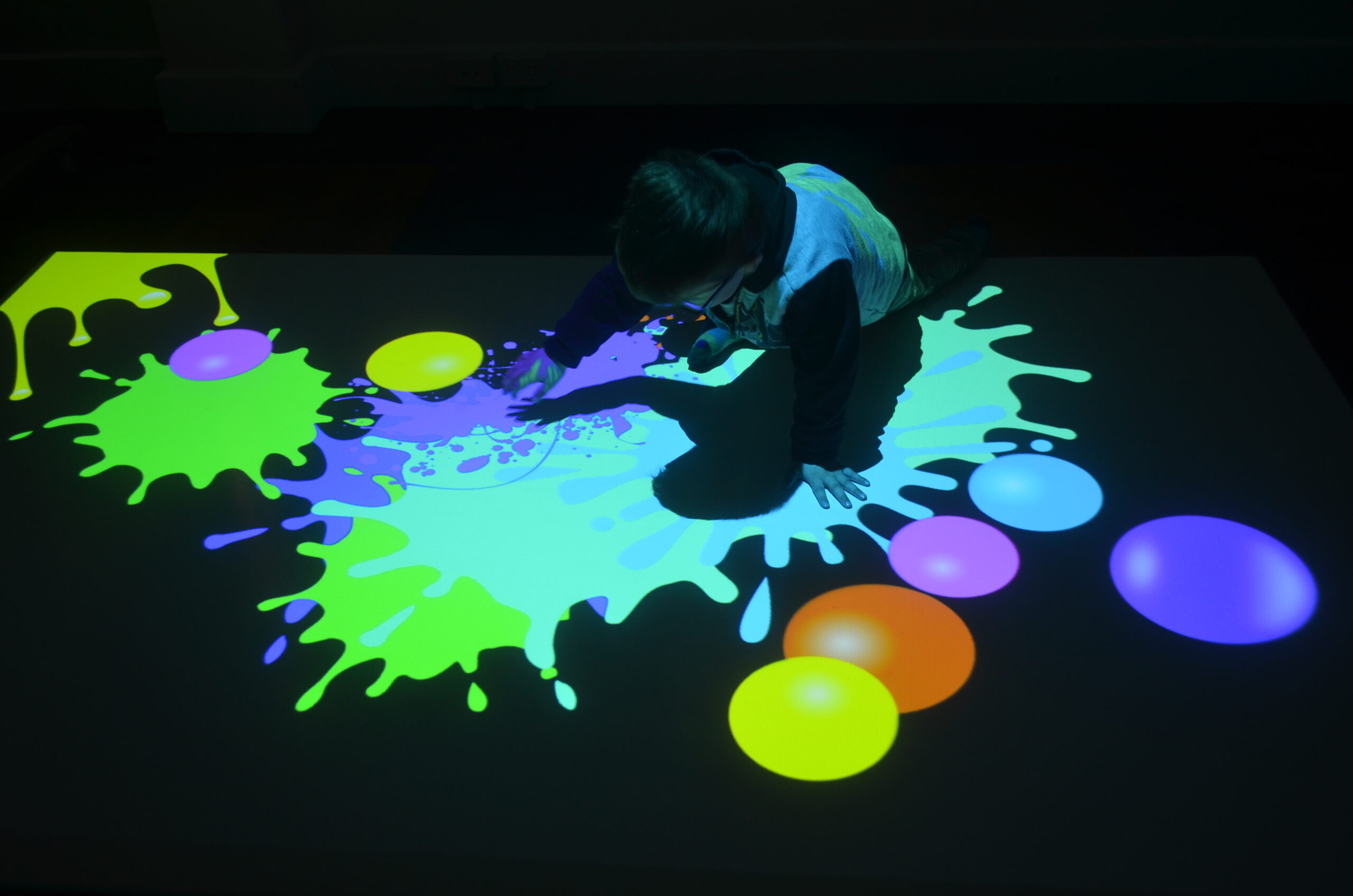
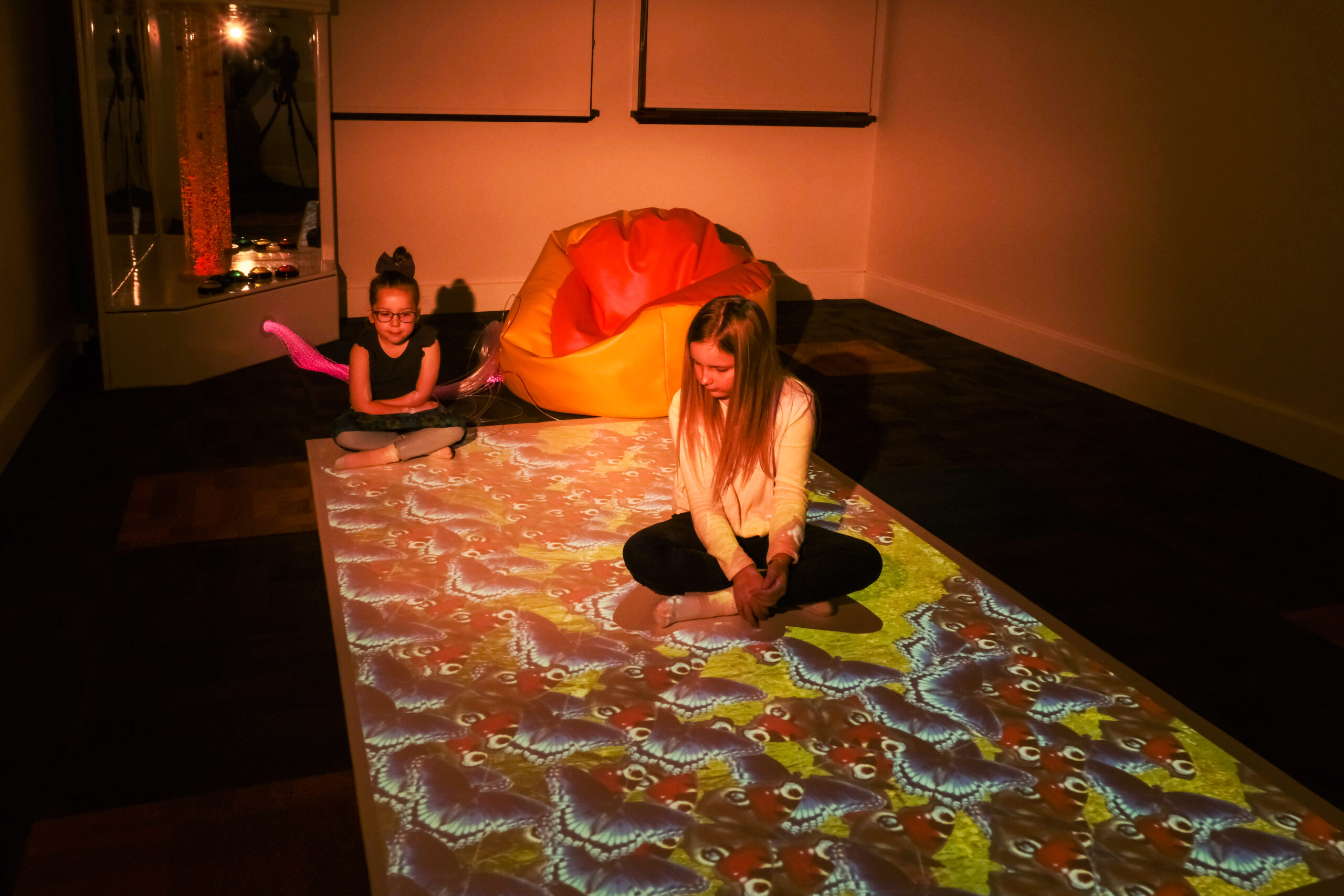
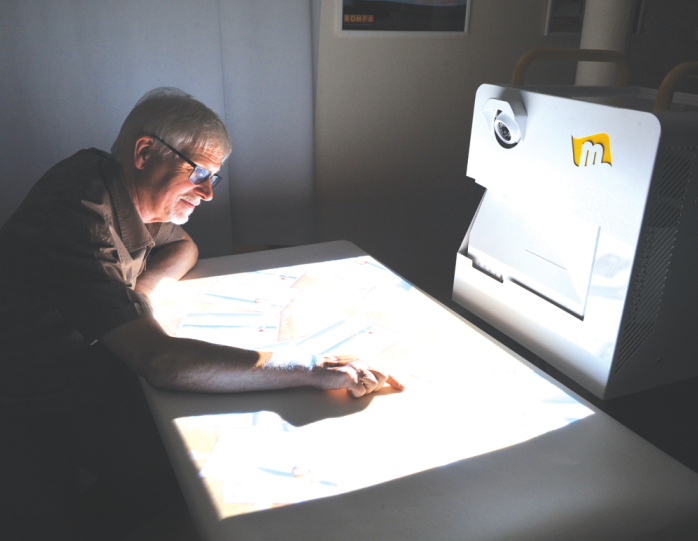
Here’s how interactive projectors can be tailored to support our clients,
Individual with Disabilities
Sensory Stimulation: Interactive projectors can provide sensory stimulation through visuals, sounds, and touch-sensitive projections. This can be particularly helpful for individuals with sensory processing disorders or those who have limited mobility.
Communication Support: For individuals with communication impairments, interactive
projectors can be used as communication aids. They can display visual cues, symbols, or text to assist individuals in expressing their needs and preferences.
Physical Therapy: Interactive projections can encourage physical activity and motor skills
development. Therapists can design games and activities that promote movement and
coordination, making therapy sessions engaging and fun.
Cognitive Rehabilitation Interactive projectors can be used for cognitive rehabilitation exercises. They can offer memory games, problem-solving challenges, and activities that stimulate cognitive functions.
Individuals with Autism
Visual Supports: Visual supports, such as social stories, visual schedules, and interactive visual scenes, can be created using interactive projectors to help individuals with autism better understand and navigate daily routines and social situations.
Sensory Integration: Interactive projectors can provide controlled sensory experiences, which can be useful for sensory integration therapy. Visuals and sounds can be adjusted to suit the sensory preferences and sensitivities of individuals with autism. Communication
Enhancement: Interactive projectors can support communication development by displaying pictures, symbols, and interactive communication boards that facilitate non-verbal communication for individuals with limited verbal abilities.
Individuals with Dementia
Reminiscence Therapy: Interactive projectors can display familiar scenes, images, and videos to trigger positive memories and engage individuals with dementia in reminiscence therapy. This can improve mood and cognitive function.
Physical Activity: Interactive games and activities projected on the floor can encourage
physical activity and mobility for individuals with dementia, helping to maintain their physical health and independence.
Calm and Relaxation: Interactive projectors can create calming and relaxing visual and auditory environments, which can be soothing for individuals with dementia who may experience agitation or anxiety.
Cognitive Stimulation: Interactive projections can offer cognitive stimulation through puzzles, quizzes, and memory games designed to engage and challenge individuals
Bubble Tube
At IGH, we use Bubble Tube to enhance spaces and provide captivating sensory experiences. Bubble tubes indeed offer more than just aesthetics; they create mesmerizing and therapeutic
environments.
Benefits of Bubble Tubes:
1. Sensory Stimulation: Bubble tubes offer a multisensory experience by combining visual, auditory, and tactile elements. The gentle rising bubbles, accompanied by soft sounds and changing colors, can be soothing and captivating.
2. Calming Effect: The rhythmic motion of bubbles can have a calming effect, making bubble tubes beneficial for individuals with sensory processing difficulties, anxiety, or stress.
3. Visual Engagement: The visually stimulating display of colorful bubbles can capture the attention and engage individuals of all ages, making bubble tubes versatile additions to various
settings.
4. Therapeutic Value: Bubble tubes are used in therapeutic settings to promote relaxation, sensory integration, and visual tracking skills. They can be particularly beneficial in occupational therapy, sensory rooms, and for individuals with autism or dementia.
5. Enhancing Ambiance: Beyond their therapeutic benefits, bubble tubes can transform the ambiance of a space. They create a unique and enchanting atmosphere that can be enjoyed in
homes, healthcare facilities, sensory rooms, and other settings. Overall, bubble tubes are simple yet captivating devices that bring a touch of magic to any environment. They provide visual and sensory stimulation, promote relaxation, and have therapeutic applicationsthat can benefit individuals of various ages and abilities.
Swing Pod
IGH uses Swing pods a valuable tool in early intervention programs for children with developmental delays or sensory processing challenges. These innovative hanging seats offer a range of benefits that can support the developmental and therapeutic needs of young children.
Here’s how swing pods can be used in early intervention for kids:
1. Sensory Integration: Swing pods provide sensory input through gentle swinging motions. For children with sensory
processing difficulties, these movements can help regulate their sensory systems, improve body awareness, and promote
sensory integration.
2. Calming and Self-Regulation: The rhythmic swinging of swing pods can have a calming effect on children. It can help them
self-regulate their emotions and reduce anxiety or sensory overload.
3. Vestibular Stimulation: The swinging motion offers vestibular stimulation, which is important for the development of balance,
coordination, and spatial awareness in children.
4. Motor Skills Development: Children can engage in activities while seated in swing pods that promote gross motor skills
development. For example, they can reach for objects, kick their legs, or use their arms to play with toys suspended from the
pod.
5. Focus and Attention: Swing pods can improve a child’s ability to focus and attend to tasks. The gentle movement can help
children stay engaged in activities and may be particularly beneficial for those with attention difficulties.
6. Relaxation and Comfort: Swing pods provide a comfortable and secure seating environment, making them ideal for
relaxation. This can be especially helpful for children who may have sensory sensitivities or difficulty sitting still in traditional
chairs.
7. Social Interaction: Swing pods can be used in group settings, encouraging social interaction and cooperative play among
children. This promotes social skills development and peer bonding.
8. Customized Sensory Experiences: The swinging speed and duration in swing pods can be adjusted to meet each child’s
sensory needs and preferences, offering a tailored sensory experience.
Our occupational therapists or early intervention specialists, incorporate swing pods into therapy sessions and early intervention programs to address specific developmental
goals and sensory needs of children. They are valuable additions to our sensory rooms offering a fun and effective way to support children in their developmental journey.
Climbing Cube
The climbing cube in our sensory gym for early intervention is an excellent addition to support the development of children,
especially those with sensory processing challenges or developmental delays
Benefit if Climbing cube in early intervention programs:
1. Sensory Integration: Climbing cubes provide opportunities for children to engage in sensory experiences. The tactile
feedback from gripping, the proprioceptive input from climbing, and the vestibular input from movement all contribute to
sensory integration, helping children process sensory information more effectively.
2. Motor Skills Development: Climbing cubes encourage children to use their fine and gross motor skills. Climbing, reaching,
grasping, and balancing are essential motor skills that can be developed through climbing activities.
3. Strength and Coordination: Climbing helps strengthen muscles, improve balance, and enhance coordination. This is
particularly valuable for children who may have motor skill delays.
4. Spatial Awareness: Climbing cubes require children to navigate and negotiate space. This promotes spatial awareness,
depth perception, and understanding of their body’s position in relation to the environment.
5. Risk Assessment: Climbing activities offer opportunities for children to assess risks and make decisions about their
movements. It encourages problem-solving and decision-making skills.
6. Confidence Building: Successfully navigating a climbing cube can boost a child’s self-esteem and confidence. It provides
a sense of accomplishment and mastery over their environment.
7. Sensory Regulation: For children with sensory processing difficulties, climbing can serve as a regulating activity. It can
help them self-regulate and manage sensory overload or anxiety.
8.Social Interaction: Climbing cubes can be used for group activities, fostering social interaction and cooperative play among
children. This promotes social skills development and peer bonding.
9. Therapeutic Use: In an early intervention setting, climbing cubes can be incorporated into therapy sessions, helping
therapists work on specific developmental goals related to motor skills, sensory integration, and coordination.
When implementing a climbing cube in a sensory gym for early intervention, it’s essential to ensure proper safety measures
are in place, and supervision is provided, especially for younger children or those with significant developmental challenges.
The climbing cube should be used as part of a comprehensive early intervention program that addresses the unique needs
of each child, guided by trained professionals such as occupational therapists or physical therapists.
Early Intervention
At IGH, we use a range of strategies and actions designed to support and enhance the development and well-being of your children who may be at risk for developmental delays or disabilities. These activities are typically aimed at children from birth to age 7 and are crucial for addressing developmental challenges as early as possible. Our Occupational therapist can help children with sensory processing issues or motor delays improve their fine and gross motor skills.
Here are some of our early intervention activities and strategies:
Developmental Screenings: Regular developmental screenings can help identify any potential delays or issues in a child’s development. Paediatricians and early intervention specialists can conduct these screenings.
Parent Education and Support: Providing parents with information and resources to understand child development, milestones, and strategies for supporting their child’s growth can be incredibly valuable.
Physical Therapy: Physical therapy can address physical delays or challenges, helping children improve their strength and mobility.
Sensory Play: Sensory play activities involving textures, colors, and sounds can help stimulate a child’s senses and support their sensory development.
Play-Based Learning: Play is a natural way for children to learn and develop. Activities that encourage imaginative and creative play can help with cognitive, social, and emotional development.
Visual Stimulation: Age-appropriate visual stimulation, such as mobiles, colorful toys, and age-appropriate screens, can support visual development.
Assistive Technology: Assistive devices and technology can aid children with developmental delays in communication, mobility, and learning.
Pricing
Play Pod + Climbing Room
(30 mins)
For further information regarding pricing, please call the clinic on 63437795
Play Pod + Swing Pod
(30 mins)
For further information regarding pricing, please call the clinic on 63437795
Play, Swing Pod & Climbing Room
(30 mins)
For further information regarding pricing, please call the clinic on 63437795
Floor/Wall Projector & Bubble Tube
(30 mins)
For further information regarding pricing, please call the clinic on 63437795
For custom package pricing, talk to our IGH Team
-
Office Location
355 Wellington Street, South Launceston,
Tasmania-7249 -
Opening Hours
Monday To Friday
8:30 am – 5:00 pm -
Contact Details
(03) 63437795
-
Office Location
355 Wellington Street, South Launceston,
Tasmania-7249 -
Opening Hours
Monday To Friday
8:30 am – 5:00 pm -
Contact Details
(03) 63437795

